News tagged ‘Safari’
The future of BossPrefs
Many users of iPhones use application called . The developer of this app is creating a new one. The new application will be called SBSettings.
The toggles drop down when you swipe along the status bar. It is very fast and can be used while in any app without exiting the app. Suppose you are in Safari but realize your 3g is not yet enabled. Just swipe the statusbar and toggle 3g, than resume in Safari where you left off. The advantage is there is no need to exit Safari and load settings or bossprefs.
The look and feel of this new app will be something like this:
via thebigboss
Google Chrome for iPhone

The above message is shown at . Our guess is that Apple will never allow Chrome to make it to AppStore. However it will probably be avaliable via Cydia for jailbreaked iPhones.
iPhone 2.2: Google Street View, Emoji, Auto-Correction Off

Apple a bit more than a week ago. Couple more features were hiden there.
First of all Apple has addressed one common request within the iPhone's Keyboard settings, allowing users to disable the iPhone's auto-correction.
The other feature is for Japanese market - Japanese emoji icons. The lack of emoji support has been blamed as part of the reason for slow iPhone adoption in Japan.
The third new feature is Street View. It allows users to view panoramic street level photographs in select cities within the Google Maps application.

Hopefully we will see more new features in this and next beta's of 2.2 firmware.
via macrumors
Related articles:
Jailbreak on firmware 2.2 beta 1
appeared just a day ago. It seems that DevTeam never sleeps ![]() They published a screenshot of jailbreaked iPhone 2G with this new firmware:
They published a screenshot of jailbreaked iPhone 2G with this new firmware:
It runs Terminal.app (non-apple application) running on 2.2b1 firmware. Thay say that version 2.2 is still vulnerable to pwnage and quickpwn on everything but iPod Touch 2G.
No news about software unlock for iPhone 3G or jailbreak for iPod Touch 2G.
Firmware 2.2 - new Safari interface
Apple just published firmware 2.2 beta 1 for developers. It is accompanied by a new beta of the iPhone SDK (build 9M2611). There are not much news about new features and improvements... but iphoneatlas already published a screenshot of new Safari interface, that is in firmware 2.2:
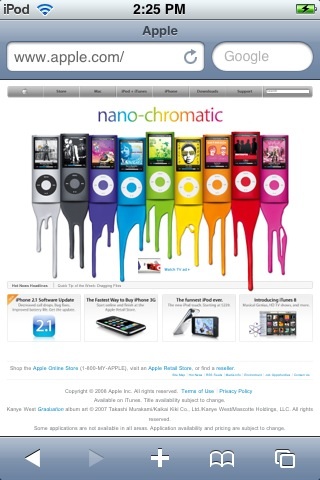
The new MobileSafari doesn't have the magnifying glass and refresh buttons at the top of the screen. There are the URL bar and search fields side-by-side instead. It looks much like the desktop version. Page refreshes are now accomplished via a tiny icon located inside the URL bar.
via iphoneatlas
myFox - Firefox for iPhone?
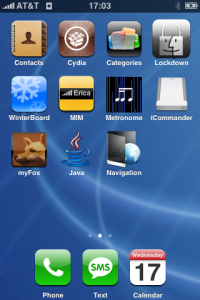

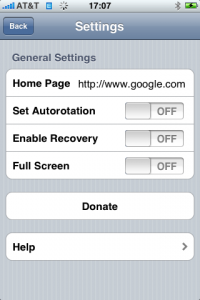
This is a Safari replacement browser for iPhone. It is avaliable via Cydia (Networking category).
- Full Screen Browsing
- Turn Landscape Mode switch on and off
- Bookmarks
- URL Recovery
- Home Page
- Google Search
- Mail Link
It is still in development stage, so more features will be quite soon.
 Leave a comment, read comments [1]
Leave a comment, read comments [1]
Block ads in Safari browser
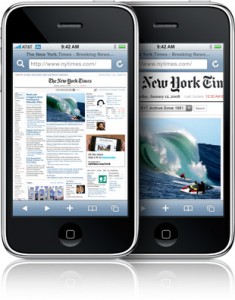
Jamesisbored published a guide, that shows how to block ads, that show up in Safari browser during web surfing.
MobileSafari has one major drawback. Up until now, there was no way to block ads. Ads increase the load time of a webpage, and especially on EDGE cause the internet to crawl. Blocking them will give you a lot of extra speed. This is one of the simplest hacks available for your iPhone. You will need to be Jailbroken and have the 2.0 Update, or later.
- Connect to your iPhone through SSH, iPhoneBrowser, or some other tool.
- Navigate to /etc/.
- Now download replacement hosts file. Replace iPhone's file with this one.
- Restart your iPhone!
This hack has been tested and confirmed to be working on the iPhone 2.1 Update.
OpenClip - Copy/Paste for iPhone

One of the common complaints about Apple’s iPhone–and one that did not get solved with the launch of the iPhone 3G–is the lack of a copy-paste function. An independent developer Zac White has taken matters in his own hands and founded a non-profit, open source, community project called which is offering iPhone developers a free Copy and Paste framework that will add this functionality to their applications.
Safari Download Plugin 2.0
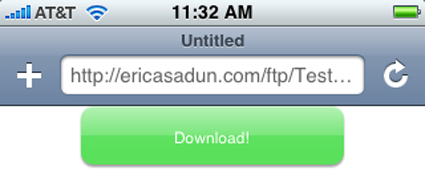
Once installed and customized, it allows you to download data off the Internet and store it on your iPhone or iPod touch local disk. You can download mp3 files, zip archives and much more. It was avaliable for old firmwares (1.1.4 and below). Now 2.0 users can use it too. Avaliable through Cydia Installer.
Copy-Paste Proof of Concept
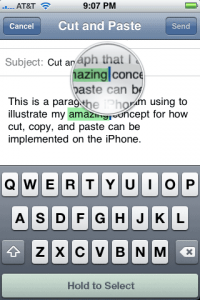
David Friedman writes in to let us know into the ‘This is how I think Apple should implement cut-and-paste’ ring. His idea is simple, intuitive, and doesn’t look to interfere with the current magnifying glass insertion point UI.
Here it is in a nutshell — when you have the magifying glass up, there’s a button you can press to toggle the various things you need for cut and paste — select, cut, copy, and paste. David recommends that the options shown would be contextual based on whether or not you have anything in your clipboard. When you’re in a text-entry field, that toggle button would appear in place of the space bar area at the bottom, while areas with text that lack text entry (like Safari) would need an unobtrusive button to appear when in the text-selection mode.
All in all, we like it.
- No convoluted finger gymnastics
- No trying to remember how many fingers you need to use for a given action
- Compatible with the current UI. In fact, it’s consistent and keeps the current text-selection metaphor of the UI intact. It just adds to it.
- Easily discoverable by all users
More screenshots:
WinterBoard - HTML as a background
![]()
Winterboard is amazing. Saurik, the developer of Winterboard, has just added dynamic backgrounds. Your background can now be an HTML web page using webkit. The possibilities are endless. He threw together a small theme called “Saurik” that fades in and out between two images as an example. But so much more can be done with this.
Comments from Saurik:
So, while staring at the desktop, I realized “wait, why don’t I make that a website? then you could do all kinds of neat things with it!”. This dream has been made a reality with the latest version of WinterBoard. There is a new file you can add called Wallpaper.html which puts a UIWebDocumentView behind SpringBoard.
New firmware 2.0.1

The main purpose is bug fixing. Many applications work faster. Here is the list of changes:
- Drag an app icon across multiple pages in one motion, rather than having to drag it, drop it, pick it up again and drag it over to next page, and repeat.
- Contacts are now more responsive.
- Backup is much faster.
- Apple may have changed the calibration of the iPhone's reception "bars" while connected to a 3G network to reflect a stronger signal than before.
- Keypad loads quicker.
- Screen rotation in Safari appears to be smoother.
- Some apps may ask to be updated after the firmware upgrade.
- SMS typing faster.
- Google Apps works faster.
- Netshare still works (for those who use it).
- Works with iPod.
- Multimedia content is kept after update.
- No Support from Pwnage and WinPwn. If you update you'll loose unlock and jailbreak.
10 things we want to see in the iPhone 2.1 Update
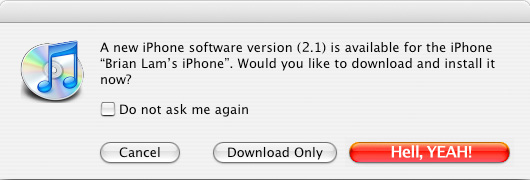
The iPhone 2.0 software is pretty good. We like the App Store a lot; it adds a boatload of new functionality to the iPhone. But it's certainly not perfect. Having used it for a few weeks, we've discovered a number of little quirks that we really hope are addressed in the upcoming update. From bugs to missing features, here are ten things that would make the iPhone a much more attractive device.
1. Make it Less Crashy
The iPhone with 2.0 software feels a little… buggy. It'll randomly crash or slow down to the point of unusability until you restart every few days with normal use. That's not right; this is a cellphone. It shouldn't feel like an unstable computer.
Get internet on a desktop or notebook through IPhone 3G
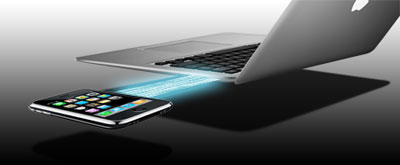
Thanks to and the porting work of as well as the authors of , it is now possible to "tether" your iPhone 3G and use its Internet connection on your laptop.
Warning - Tethering your iPhone is against the iPhone data plan terms. AT&T could slap you with huge fees if you overuse this. I recommend only using it during emergencies.
Here is a basic plan (by the way, this should work for old IPhone also):
- Jailbreak your iPhone 3G
- Install 3Proxy and Terminal
- Create an ad-hoc Wi-fi network using your laptop
- Join the network with your iPhone
- Find the iPhone's IP address
- Open Terminal and run the proxy program
- Open Safari on your iPhone and open a web page
- Configure your browser to use the proxy
Later we'll discuss it with more details.
Step 1: Jailbreak your iPhone
 Leave a comment, read comments [3]
Leave a comment, read comments [3]
Safari benchmark - 2.0 is faster than 1.1.4
There is not much defference between Safari 1.1.4 and 2.0. But Under the hood, MobileSafari 2.0's performance is hugely improved over 1.1.4. Everything related to web surfing feels faster, web pages consistently load faster on 2.0, both via Wi-Fi and EDGE. This has nothing to do with the new iPhone 3G hardware — this is about dramatic performance improvements on original iPhones upgraded to the 2.0 OS.
Using MobileSafari simply feels faster, especially with web applications. Feel is by nature subjective, but JavaScript benchmarks back this up.
In August last year, to compare the iPhone's processing power and JavaScript interpreter against Safari 3 running on a Mac with a 1.83 GHz Core Duo. At that time, the current version of the iPhone OS was 1.0.1. Here are the results of those same benchmarks on original iPhones running the 1.1.4 and new 2.0 OS versions, with Hockenberry’s 1.0.1 results included for comparison:
| Test | 1.0.1 | 1.1.4 | 2.0 | Vs. 1.0.1 / 1.1.4 |
|---|---|---|---|---|
| 100,000 iterations | 3.209 | 1.096 | 0.145 | 22× / 8× |
| 10,000 divisions | 0.413 | 0.181 | 0.029 | 14× / 6× |
| 10,000 sin(x) calls | 0.709 | 0.373 | 0.140 | 5× / 3× |
| 10,000 string allocations | 0.777 | 0.434 | 0.133 | 6× / 3× |
| 10,000 function calls | 0.904 | 0.595 | 0.115 | 8× / 5× |
The last column shows how many times faster the 2.0 version of MobileSafari was versus 1.0.1 and 1.1.4. The same results, charted (smaller bars are faster) can be viewed above.
The results are obvious. WebKit JavaScript performance has improved steadily and significantly in just one year, with a huge jump between 1.1.4 and the new 2.0.0. In side-by-side page loading tests between two original iPhones running 1.1.4 and 2.0.0, the new version consistently finished at least a few seconds faster.
For all the hubbub regarding the new App Store, most “iPhone software” runs in the web browser. But improvements in WebKit performance often help native iPhone app performance, too — a slew of my favorite native iPhone apps have built-in WebKit browsers (e.g., NetNewsWire, Twitterrific, Instapaper, and Cocktails). When WebKit performance improves, any app that uses WebKit improves, and WebKit improved a lot between iPhone 1.1.4 and 2.0.0.
via daringfireball.net